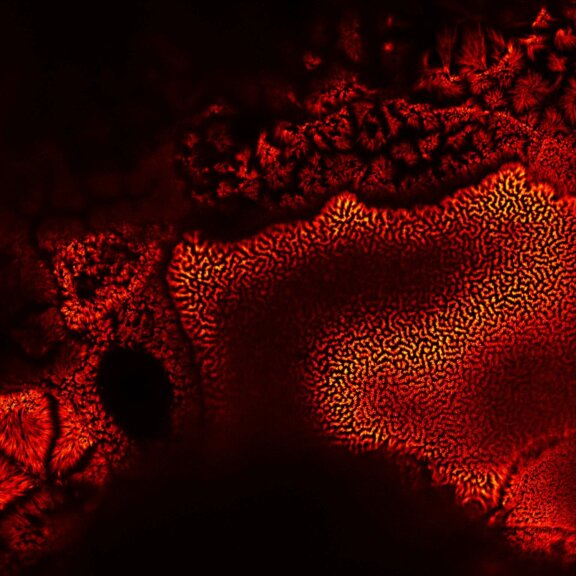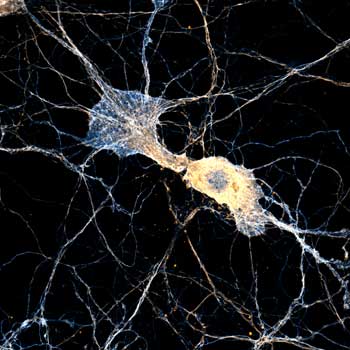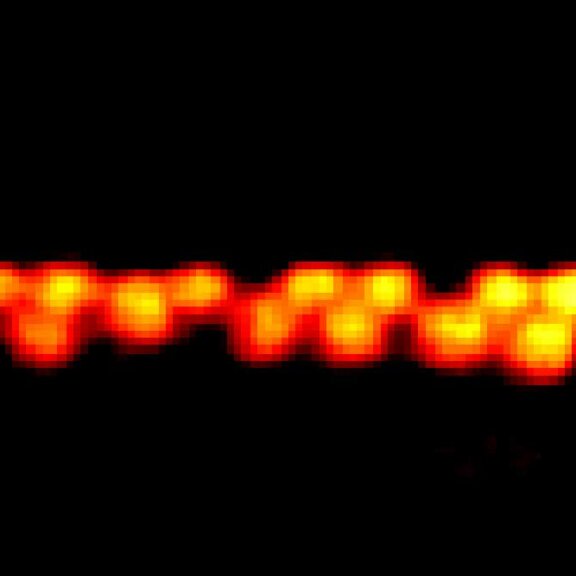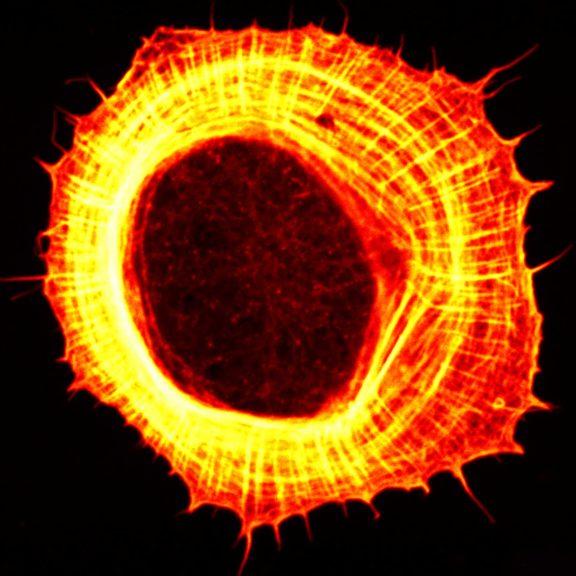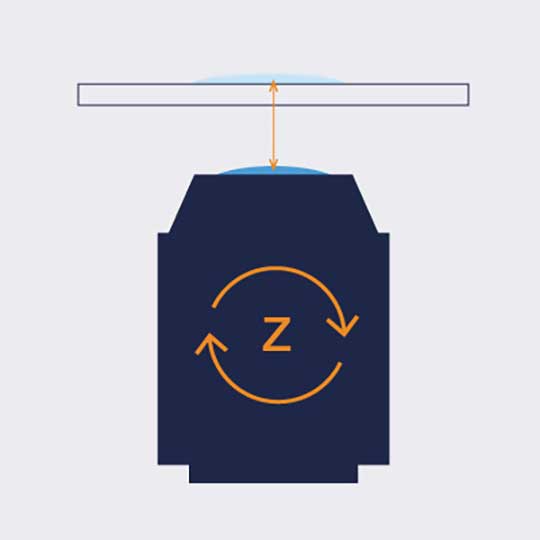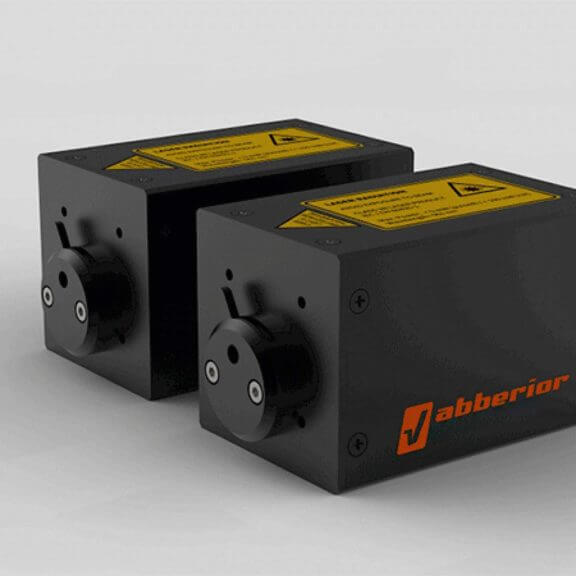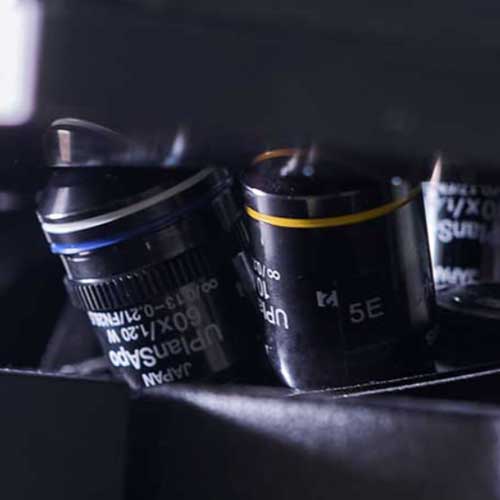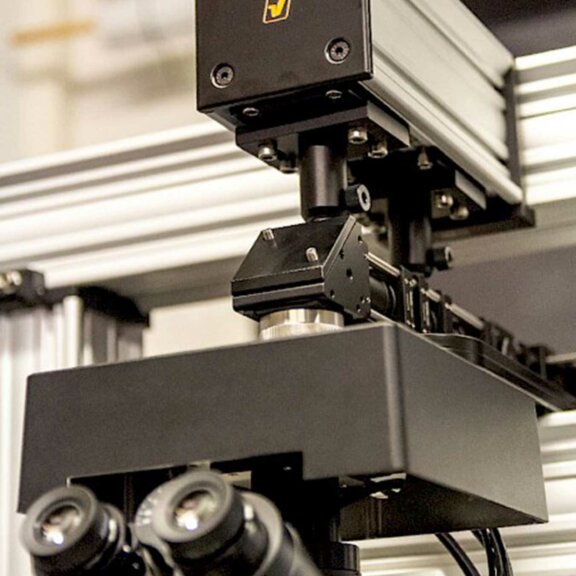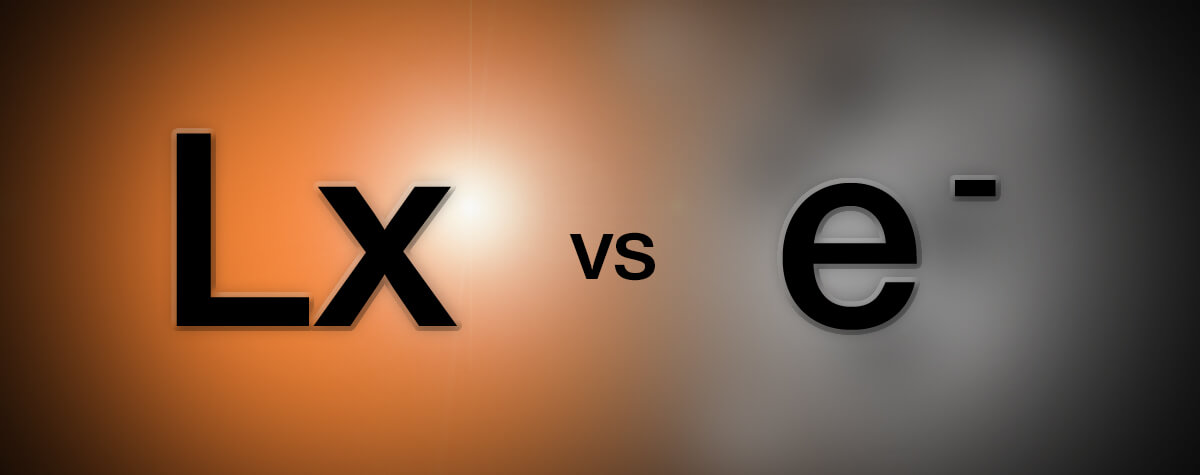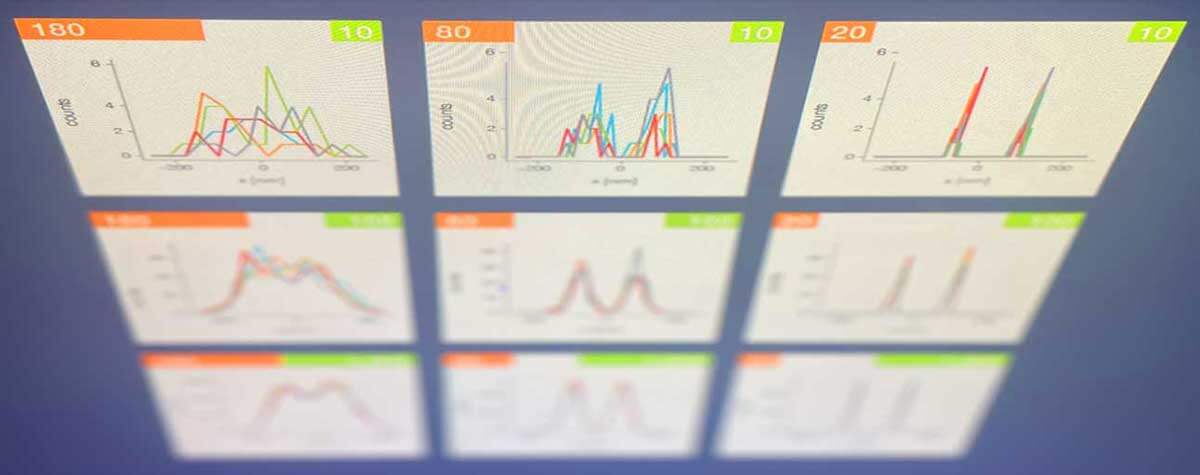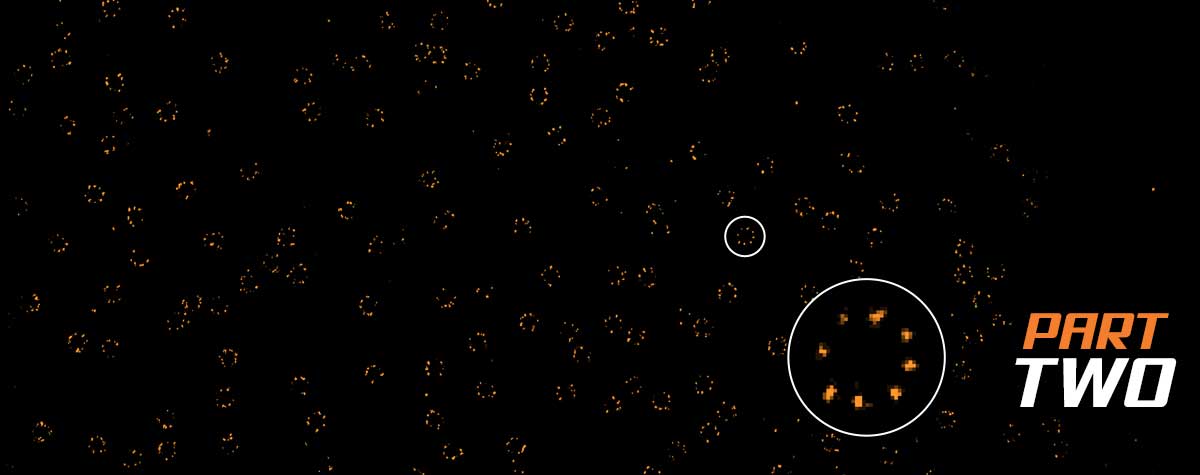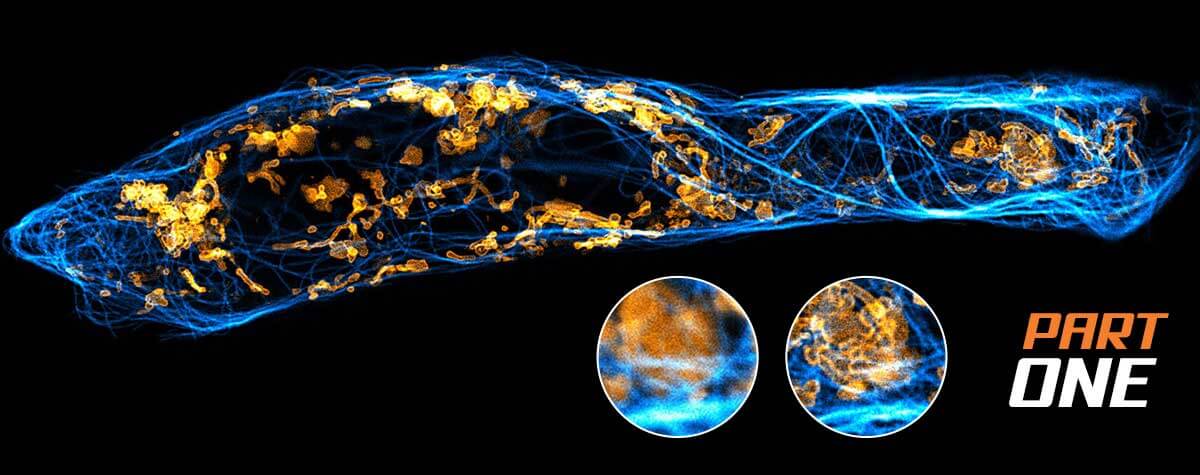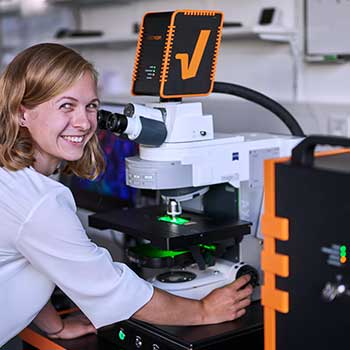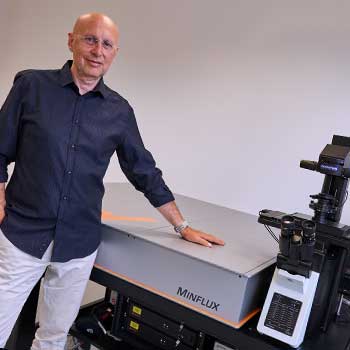Because we are living in a material world – Material Science
FAQ Video 38

MINFLUX allows an everyday 3D resolution of 2 – 3 nm and offers about 100 times faster tracking than with a camera-based system.
NEWS
MINFLUX unravels the structural dynamics of PIEZO1 ion channels
English version of the Spektrum interview with Nobel Laureate Stefan W. Hell about STED, MINFLUX and PALM/STORM.
Observe motor proteins stepping along in living cells with MINFLUX
EMBL Imaging Centre & abberior Instruments foster intense collaboration
Stefan Hell and Heads of BioNTech receive Werner-von-Siemens Ring 2022
Article in Technology Review on the current boom of light microscopy
Materials science aims to investigate the structure and properties of materials, to improve them, and to develop new materials. For a long time, electron microscopy and near-field microscopy were mainly used for this purpose. Nowadays, 2D and 3D superresolution light microscopy techniques such as STED and MINFLUX are used more and more. They offer the great advantage that a resolution beyond the diffraction limit of light can be achieved without having to prepare or section the samples, which often changes their properties. STED and MINFLUX can also be applied to collect information on the dynamic behavior of materials. Examples for the use of superresolution microscopy in materials science range from polymers and nanofibers to inorganic substances and carbon materials.
Talk to a scientist >Making structures light up
Colorful image of nanoparticles or beads stained with abberior dyes
Test your sample >A matter of detail
abberior offers high-performance STED systems with superior optics that provide a resolution of down to 20 nm in 2D and 75 nm in 3D. And we are the only manufacturer of MINFLUX, the light microscope with single-digit nanometer resolution and a tracking speed of up to 10 kHz. Our product portfolio is completed by a comprehensive selection of fluorescent dyes and labels suitable for various applications.
MINFLUX – unrivaled resolution and speed

The MINFLUX platform offers an unprecedented array of imaging possibilities and allows you to resolve structures as small as a molecule, along all three dimensions. This unmatched resolution capability combined with unprecedented speed reveals sample details never seen before and helps to dissect fast and dynamic processes in space and time. MINFLUX is the world’s most powerful fluorescence microscope. Details >
INFINITY – forever cutting edge

The INFINITY platform is the most customizable platform for all things microscopy and may be adapted to your particular demands to investigate materials. INFINITY is always up to the challenge. Just tell us what you need and we will build you a customized, continuously upgradable system specialized for your research. Details >
MIRAVA POLYSCOPE – one for all and all for one

MIRAVA® is the first true POLYSCOPE®. Every resolution – from millimeters down to 3 nm – combined in a singularly unique system. MIRAVA unites four microscopy technologies to cover an unprecedented resolution spectrum, extending over several orders of magnitude from diffraction-limited imaging all the way to true molecular resolution. Our LiGHTBOX software allows beginners to intuitively arrive at a top-notch image within three clicks, while also giving experts full control over the instrument. Details >
Cutting-edge tools
to change the game
Choose a superpower for your experiment – our modules
We offer many modules to overcome the specific imaging challenges in your research. RAINBOW detection allows you to collect both, maximum signal and extend spectral flexibility. RAYSHAPE corrects for aberrations and facilitates imaging deep into the specimen. Then there are Autofocus and Autoalignment, which ensure that your beams and focal spot are always in best shape. Our modules can do all of this and even more! And if you can’t find what you need on our website, get in touch with us, and we’ll develop it for you.
MATRIX Detector
Many eyes see more than one. The MATRIX detector drastically improves signal-to-background ratio, resolution, and dynamic range.
TIMEBOW Imaging
TIMEBOW lifetime imaging for stunning results at confocal and STED super-resolution.
FLEXPOSURE Illumination
Brings down the light dose on your sample and lables dramatically. Key ingredient for volume and live-cell superresolution.
RAYSHAPE Mirror
Dynamic aberration correction with a deformable mirror over about 200 µm z-range. 140 digital actuators adjust the mirror surface within milliseconds.
Custom Solutions
We offer solutions for even the most challenging applications. Everything that can be done, we will do.
Broaden your knowledge
of microscopes, dyes, and superresolution
How the donut changed the world

For over a century, we stood at the edge of microscope resolution and cursed the inexorable blur of diffracted light. Instruments improved, but the fog never lifted. Then, one man stopped trying to control how light behaves. Armed with a donut-shaped laser beam, he instead commanded where it shines and untethered resolution forever. Details >
PALM and STORM are often used as synonyms, and in fact they have a lot in common. But there are slight differences that can be important for your application. And then there are other superresolution techniques, too – like STED and MINFLUX. Details >
For centuries, conventional light microscopy was and continues to be the workhorse of labs to visualize cells and cellular details. But the advent of electron microscopy brought about a new level of detail. Let’s take a closer look at the two techniques. Details >
Photon numbers from the emitting fluorophore. Width of the PSF. How do they impact the resolution of a microscope? Here’s a simple graphic that lays out those effects. Details >
For all the talk about criteria and definitions, measuring the resolution of a microscope is more nuanced than you’d think. The scales at which microscopes operate today are subject to noise and background that obscure and distort signals. What you use for the measurement can make a big difference. The second article in our “Resolution” series. Details >
Are you surprised that the very nature of light caps the resolution that we can achieve in microscope images? Luckily, there are workarounds to this limit. These workarounds push the amount of detail in an image by manipulating precisely where and when fluorophores are allowed to emit. As such, they provide us with a completely new set of tools to shrink the distance between two points while still being able to resolve them. Details >












